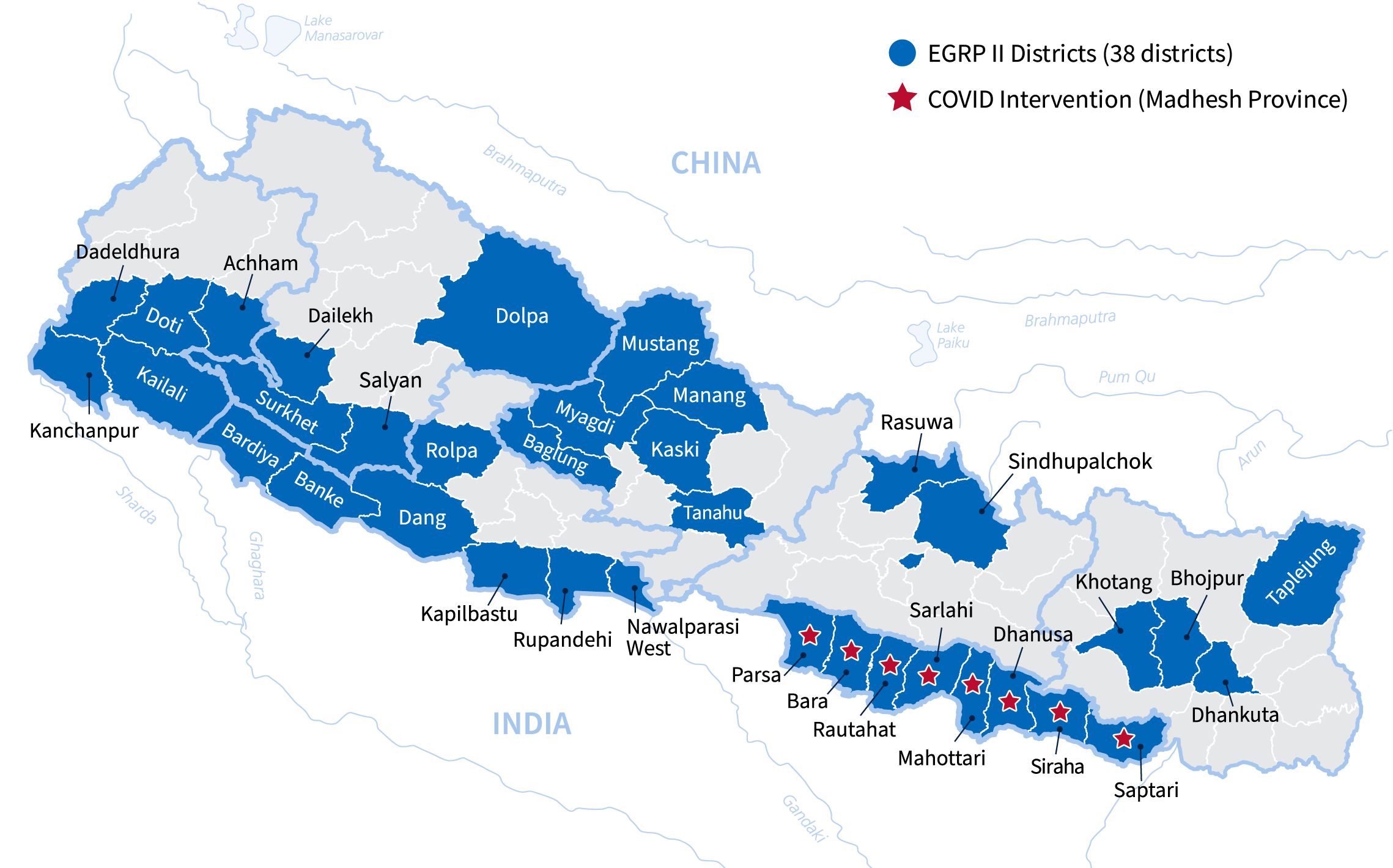Building on the foundation of the first EGRP from 2015 to 2020, EGRP II (2020-2022) aimed to improve early grade literacy for students in grades 1-3 in Nepali public schools. EGRP II supported activities across all program districts, plus activities for a community- and home-based intervention response to COVID-19 in Madhesh Province, which is described in more detail below.
EGRP II activities included:
- Supporting the development and rollout of the Government of Nepal’s “Integrated Curriculum” and continuing to scale up the government’s NEGRP.
- Building municipal- and provincial-level capacity for delivering early grade reading services.
- Improving local governments’ ability to provide effective teacher professional support.
- Supporting continuity of learning in response to the COVID-19 pandemic.
These activities were conducted in 38 target districts across all 7 of Nepal's provinces.
The CB-EGRA instrument was the key tool used in the evaluation. During the baseline evaluation, a small pilot study was conducted to link student scores on the CB-EGRA to their scores on typical EGRA subtasks. View the impact of the EGRP II activities on the Intervention Impact page.
The sample of students assessed for the overall intervention consisted of a mix of students who spoke Nepali as their mother tongue, and students who spoke other languages as their mother tongue.
COVID-19 Intervention in Madhesh Province
In addition to EGRP II implementation, a customized community- and home-based learning approach was targeted to 8 districts in Madhesh Province that were heavily impacted by COVID-19. These interventions included:
- teacher training on flexible learning approaches
- distribution of more than 2,000 tablets pre-loaded with offline learning content, and
- provision of books and stationery packs.
The impact of this intervention was evaluated separately from EGRP II. The sample of students assessed for the COVID-19 intervention consisted only of students who spoke other languages (not Nepali) as their mother tongue. View the impact of the program’s catch-up learning activities on the Intervention Impact page.
More detailed information about EGRP II may be found in the Endline Report: Program Impact on Student Reading Performance in the Early Grades (PDF, 6.7 MB).





